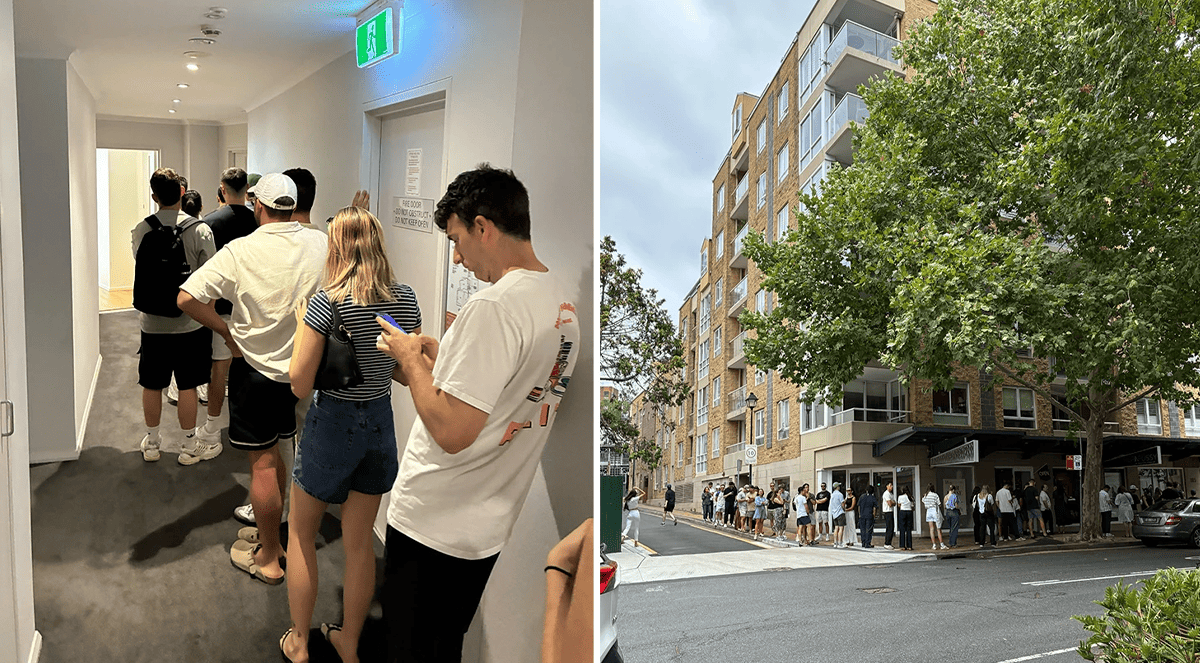
If you’ve been looking into investing in property, you’ll likely have heard the terms positive gearing and negative gearing.
But confusion often shrouds these concepts, not only around what they really mean but also regarding which is a better investment strategy.
The truth is, they both have their pros and cons, and the best way to devise a suitable strategy is to consider your own individual circumstances and financial situation.
But first things first, what do positive and negative gearing actually mean?
Positive gearing
Positive gearing is when an investment property attracts a high enough rent to cover the costs involved in owning the property.
These costs include the mortgage repayments, the interest on the mortgage, and any other outgoings like property management fees, maintenance and repair costs.
When a property is positively geared, a landlord doesn’t have to worry about paying costs out of their own pocket, as the rent covers it all.
The plus sides of positive gearing are somewhat obvious. You don’t have to worry as much about paying out of your own pocket to cover mortgage repayments, and your cash flow will benefit from this.
It also means that you would likely make a weekly profit, with the property paying more than what the mortgage repayments and interest are.
With greater cash flow, you could save a deposit for your next investment property, and extend your portfolio to build a source of passive income.
As a positively geared property provides income from the start, it can be a clever investment to boost the weekly budget. It also presents fewer risks, as investors aren’t solely relying on the profit of capital growth, but also a more consistent stream of income.
Despite benefitting from greater cash flow, utilising positive gearing as a strategy does mean that your taxable income will be higher.
Which means you will generally have to pay more income tax at the end of the financial year.
There are, however, strategies that offset these tax implications, and deductions you can claim at tax time to reduce the tax you’re required to pay on rental income.
Speaking to a registered tax agent with experience in investment property will help you devise an effective strategy.
Negative gearing
Negative gearing involves purchasing a property with a rental return that will not cover all the costs involved in owning the property.
This strategy means investors have to pay a portion of the repayments as the rent falls short.
The concept of investing in an asset that requires more financial input does sound like a risk, but there are some benefits when it comes to tax time.
Using a negative gearing strategy may sound ludicrous at first, but there are benefits that make it attractive to investors.
Negative gearing allows investors to claim a loss, and offset their taxable income, so that they pay less tax at the end of the financial year.
It can also be used to offset high-income earners’ tax obligations, and can be part of a sophisticated strategy to reduce overall income tax payable. Taking a look at tax brackets is essential to weigh up if this will work for you.
It should be noted that investors who use negative gearing rely heavily on their property, making strong capital growth to turn a profit, which presents a larger risk.
Additionally, capital gains tax will likely be a necessary expense when it comes to selling the property, and that can eat into profits.
Negative gearing can be a good idea when it comes to offsetting tax obligations, but it carries higher risk and could also mean investors struggle with weekly cash flow.
The best way to determine which strategy suits your individual needs best is to speak to a financial or investment advisor.
Stay Up to Date
with the Latest Australian Property News, Insights & Education.




.png?width=292&height=292&name=Copy%20Link%20(1).png)
 SIGN UP FOR FREE NEWSLETTER
SIGN UP FOR FREE NEWSLETTER

.png)






.jpg?width=1920&height=1080&name=Warning%2c%20You%20Might%20Be%20Facing%20Higher%20Taxes%20Soon%20(1).jpg)





.png?width=1920&height=1080&name=Rate%20Drops%20Signal%20BIGGEST%20Property%20Boom%20in%20DECADES%20(1).png)

.jpg?width=1920&height=1080&name=Labor%20vs%20Liberal%20These%20Housing%20Policies%20Could%20Change%20the%20Property%20Market%20Forever%20(1).jpg)
.jpg?width=1920&height=1080&name=QLD%20Slashes%20Stamp%20Duty%20Big%20News%20for%20Investors%20%26%20Home%20Buyers%20(1).jpg)
.jpg?width=1920&height=1080&name=Trump%20Just%20Slapped%20Tariffs%20%E2%80%93%20Here%E2%80%99s%20What%20It%20Means%20for%20Australia%20(1).jpg)
.jpg?width=1920&height=1080&name=Federal%20Budget%202025%20More%20Debt%2c%20No%20Housing%20%E2%80%93%20Here%E2%80%99s%20What%20You%20Need%20to%20Know%20(1).jpg)
.jpg?width=1920&height=1080&name=Australias%20Housing%20Crisis%20is%20about%20to%20get%20MUCH%20Worse%20(New%20Data%20Warns).jpg)
%20(1).jpg?width=1920&height=1080&name=Australias%20RENTAL%20CRISIS%20Hits%20ROCK%20BOTTOM!%20(2025%20Update)%20(1).jpg)
%20(1).png?width=1920&height=1080&name=Is%20Adelaide%20Still%20a%20Good%20Property%20Investment%20(2025%20UPDATE)%20(1).png)
.jpg?width=1920&height=1080&name=RBA%20Shocks%20with%20Rate%20Cuts!%20What%E2%80%99s%20Next%20for%20Property%20Investors%20(1).jpg)
%20(1).jpg?width=1920&height=1080&name=I%20Predict%20The%20Feb%20Rate%20Cut%20(My%20Price%20Growth%20Prediction)%20(1).jpg)
.png?width=1920&height=1080&name=Why%20Property%20Prices%20Will%20Rise%20in%202025%20Market%20Predictions%20(1).png)
.jpg?width=1920&height=1080&name=Why%20Investors%20Are%20Choosing%20Apartments%20Over%20Houses%202%20(1).jpg)
.jpg?width=1920&height=1080&name=Why%20Rate%20Cuts%20Will%20Trigger%20A%20Property%20Boom%20(1).jpg)
.jpg?width=1920&height=1080&name=Retire%20On%202Million%20With%20One%20Property%20(Using%20SMSF).jpg)
.jpg?width=1920&height=1080&name=4%20Reasons%20Why%20You%20Should%20Invest%20in%20Melbourne%20Now%20(1).jpg)
%20(1).jpg?width=1920&height=1080&name=Old%20Property%20vs%20New%20Property%20(Facts%20and%20Figures%20Revealed)%20(1).jpg)
%20(1).jpg?width=1920&height=1080&name=Will%20The%20New%20QLD%20Govt%20Create%20a%20Property%20Boom%20or%20Bust%20(My%20Prediction)%20(1).jpg)
%20Scott%20Kuru%20(1).jpg?width=1920&height=1080&name=Inflation%20Hits%20Three-Year%20Low%20(Will%20RBA%20Cut%20Rates%20Soon)%20Scott%20Kuru%20(1).jpg)
.jpg?width=1920&height=1080&name=How%20to%20Buy%20Investment%20Property%20Through%20SMSF_%20The%20Ultimate%20Guide%20(1).jpg)
.jpg?width=1920&height=1080&name=Victoria%20Slashes%20Stamp%20Duty%20Melbourne%20Set%20to%20Boom%20Scott%20Kuru%20(1).jpg)
.png?width=1571&height=861&name=Are%20Foreign%20Buyers%20Really%20Driving%20Up%20Australian%20Property%20Prices%20(1).png)
.jpg?width=1920&height=1080&name=The%20Single%20Factor%20That%20Predicts%20Property%20Growth%20Regions%20(1).jpg)
%20Scott%20Kuru%20(1).jpg?width=1920&height=1080&name=My%20Prediction%20On%20Rates%20%26%20Negative%20Gearing%20(Market%20Crash)%20Scott%20Kuru%20(1).jpg)

-1.png?width=1920&height=1080&name=Major%20Banks%20Cut%20Rates%20Will%20RBA%20Follow%20Suit%20(Sept%20Rate%20Update)-1.png)
%20Scott%20Kuru-1.png?width=1920&height=1080&name=Rate%20Cut%20Coming%20What%20New%20Zealands%20Move%20Means%20for%20Australia%20(Sept%20Prediction)%20Scott%20Kuru-1.png)
%20(1).jpg?width=1920&height=1080&name=Buy%20when%20the%20interest%20rates%20are%20high!%20(Why%20you%20must%20buy%20now!)%20(1).jpg)
.jpg?width=1920&height=1080&name=Carms_Revised%20Taxes%20Due%20Aug%209%20YT%20Thumbnail02%20(1).jpg)
.jpg?width=1920&height=1080&name=Carms_Too%20Little%20Too%20Late%20Aug%207%20YT%20Thumbnail01%20(1).jpg)









.jpg?width=1920&height=1080&name=Carms_Rate%20Drop%20In%20July%20Jun%2010%20YT%20Thumbnail02%20(1).jpg)
.jpg?width=1920&height=1080&name=Carms_Own%20a%20Property%20V6%20Jun%205_YT%20Thumbnail%20(1).jpg)









.png?width=1920&height=1080&name=Artboard%201%20(3).png)






.jpg?width=1920&height=1080&name=YT%20thumbnail%20%20(1).jpg)

